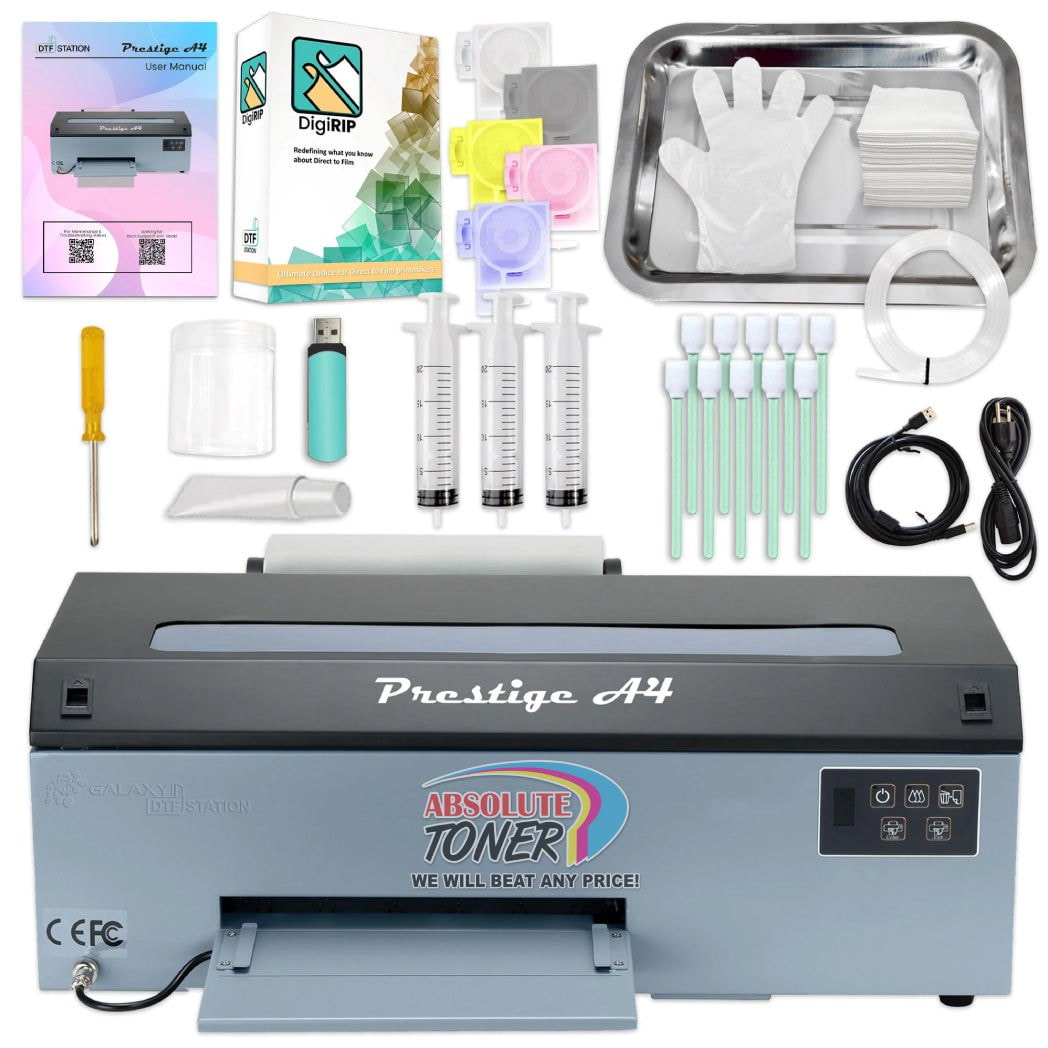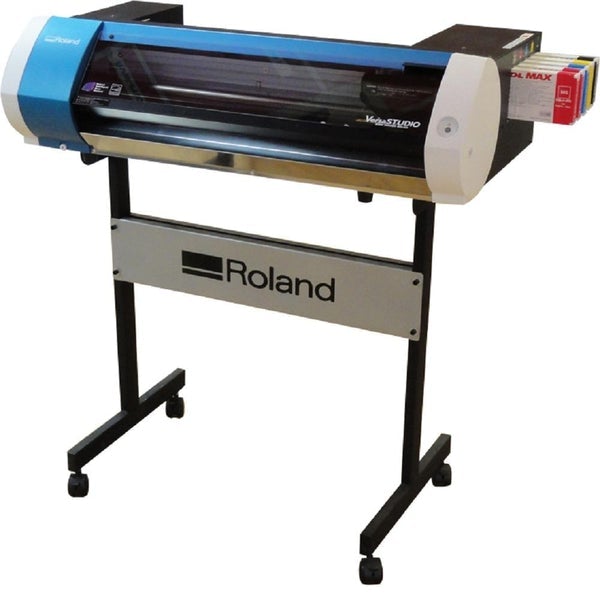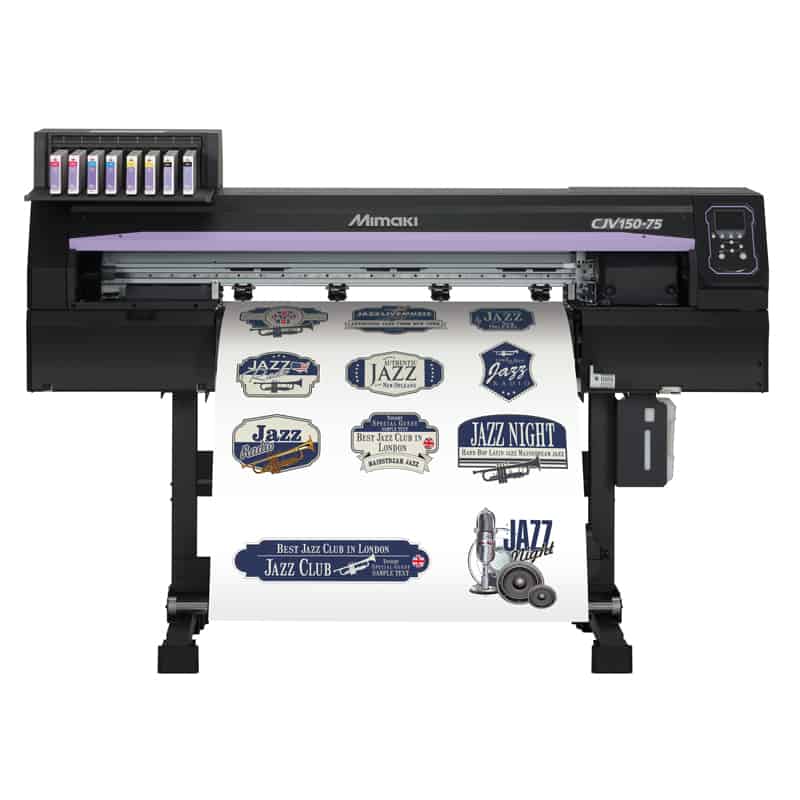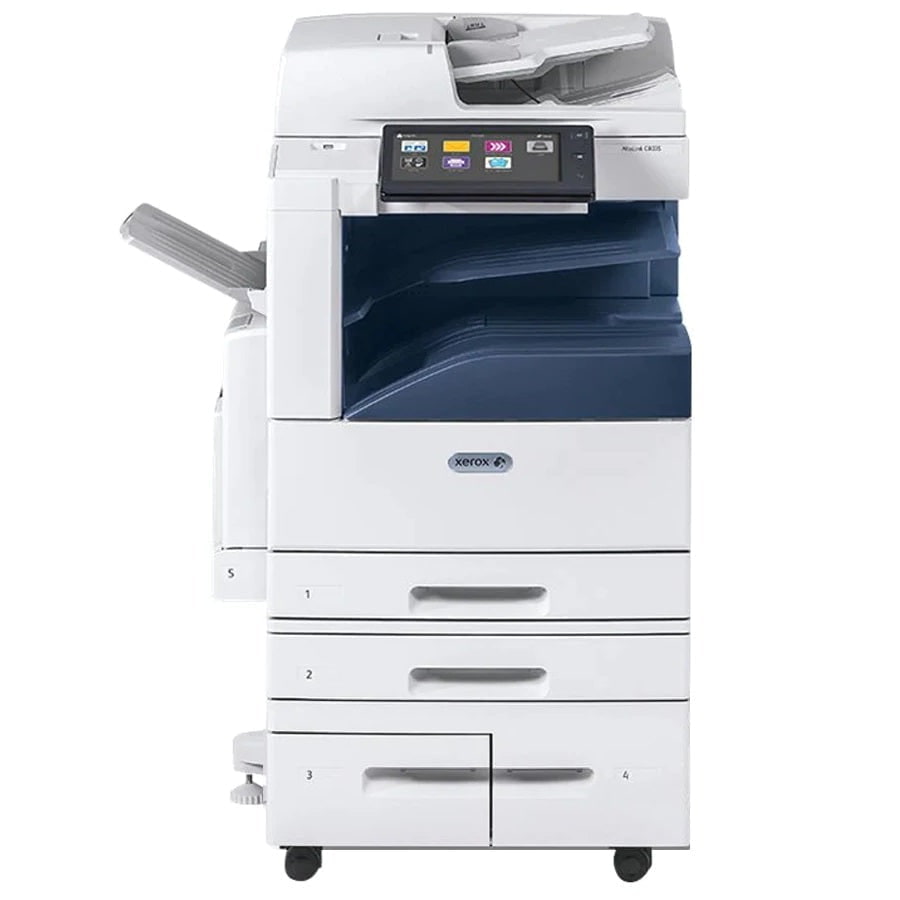Top Reasons Why DTF Printing Continues to Dominate The Print On Demand Market
Printing technology has come a long way, with numerous techniques available in the market today. From traditional screen printing to the more modern direct-to-garment (DTG) and sublimation printing, the options are vast. However, Direct-to-Film (DTF) printing has emerged as a compelling choice, captivating the interest of businesses and hobbyists alike. Why is DTF printing still so appealing in a competitive market? Let's dive into the reasons behind its growing popularity.
Understanding DTF Printing
What is DTF printing?
Direct-to-Film (DTF) printing is a relatively new digital printing method that involves printing designs onto special transfer films, which are then transferred onto various fabrics using heat. This technique has revolutionized the textile printing industry by offering a versatile and efficient solution.
How does DTF printing work?
The process begins with printing a design onto a PET film using a specialized printer and inks. A powder adhesive is then applied to the printed film, which is heated to cure the adhesive. Finally, the film is pressed onto the fabric using a heat press, transferring the design onto the garment.
Versatile Application on Various Fabrics
One of the standout features of DTF printing is its versatility. This method works exceptionally well on a wide range of fabrics, including cotton, polyester, blends, and even less common materials like leather and nylon. This adaptability makes it a go-to option for fashion designers, merchandise creators, and small businesses looking to diversify their product offerings.
Whether you're printing on a delicate silk scarf or a rugged canvas bag, DTF printing ensures high-quality results. This flexibility sets it apart from other printing methods, which often have limitations on the types of fabrics they can handle.
Cost-Effective Printing Solution
When it comes to cost, DTF printing offers significant advantages. While the initial investment in a DTF printer and materials may seem high, the long-term savings are substantial. Unlike traditional screen printing, which requires separate screens for each color, DTF printing allows for full-color designs in a single pass, reducing setup time and costs.
For small businesses and startups, DTF printing provides a budget-friendly solution. The ability to print on demand means there's no need for large inventory or pre-printed stock, minimizing waste and overhead expenses.
Unparalleled Print Quality
DTF printing is renowned for its vibrant colors and exceptional detail. The technology allows for high-resolution prints that capture even the smallest elements of a design. This level of precision ensures that logos, intricate patterns, and complex images are reproduced with stunning accuracy.
In comparison to traditional screen printing, DTF offers superior color consistency and vibrancy. The prints are not only visually appealing but also maintain their quality over time, making them ideal for both promotional items and high-end apparel.
Strong Durability and Washability
Durability is a critical factor in textile printing, and DTF printing excels in this area. The prints created using this method are highly resistant to washing and wear, ensuring that designs stay intact and vibrant even after multiple washes.
Real-world tests have shown that DTF prints can withstand the rigors of daily use without cracking or fading. This durability makes it a preferred choice for sportswear, uniforms, and other items that require frequent laundering.
Efficient Working Process
The efficiency of the DTF printing process is another key advantage. The step-by-step workflow, from printing the design on film to transferring it onto the fabric, is straightforward and time-efficient. This simplicity makes it accessible even to those who are new to textile printing.
Moreover, DTF printing does not require extensive setup or cleanup, unlike traditional methods such as screen printing. This efficiency translates to faster turnaround times and the ability to fulfill orders promptly, which is crucial in today's fast-paced market.
Environmentally Friendly
In an era where sustainability is increasingly important, DTF printing stands out as an eco-friendly option. The inks used in DTF printing are typically water-based and free from harmful chemicals, reducing the environmental impact. Additionally, the precise application of adhesive and ink minimizes waste, making the process more sustainable.
Compared to methods like screen printing, which can generate significant waste from screens and excess ink, DTF printing's streamlined approach is much kinder to the environment.
Technological Advancements in DTF Printing
The technology behind DTF printing is continually evolving, with innovations that enhance its efficiency and quality. Advances in printer design, ink formulations, and adhesive technologies have made the process more reliable and accessible.
Future prospects for DTF printing look promising, with ongoing research and development aimed at further improving the technology. As these advancements continue, we can expect even greater efficiency, quality, and versatility from DTF printing.
Case Studies and Success Stories
To illustrate the impact of DTF printing, consider the success stories of businesses that have adopted this technology. For instance, small apparel brands have reported significant growth after switching to DTF printing, thanks to its ability to produce high-quality, custom designs quickly and cost-effectively.
Testimonials from satisfied customers highlight the reliability and durability of DTF prints, reinforcing the benefits discussed earlier. These real-life examples demonstrate the tangible advantages of incorporating DTF printing into a business model.
Common Misconceptions About DTF Printing
Despite its many benefits, there are some misconceptions about DTF printing that need addressing. One common myth is that DTF printing is only suitable for small-scale operations. In reality, the technology is scalable and can handle both small and large production runs efficiently.
Another misconception is that DTF prints are not as durable as those created with other methods. As previously discussed, DTF prints are highly resistant to wear and washing, making this a false belief.
Challenges and Considerations
Like any technology, DTF printing comes with its challenges. One potential drawback is the need for specialized equipment and materials, which can be a barrier for some businesses. Additionally, achieving optimal results requires a learning curve and attention to detail.
However, these challenges can be overcome with proper training and investment in quality equipment. By understanding the limitations and addressing them proactively, businesses can fully leverage the benefits of DTF printing.
DTF Printing vs. Other Printing Techniques
Direct-to-Garment (DTG) printing: While DTG printing also allows for high-quality, full-color prints, it is generally more suitable for cotton fabrics and may not perform as well on other materials. DTF printing offers greater versatility in fabric choice.
Sublimation printing: This method is excellent for polyester fabrics but falls short on natural fibers like cotton. DTF printing, on the other hand, works well on a wider range of materials.
Heat transfer vinyl (HTV): HTV is known for its durability, but the process is more labor-intensive and less suited for complex, multi-color designs. DTF printing simplifies the creation of detailed, vibrant prints.
Tips for Getting the Best Results with DTF Printing
To achieve the best results with DTF printing, follow these tips:
-
Preparation: Ensure the fabric is clean and pre-treated if necessary. This helps the adhesive bond better with the material.
-
Printing: Use high-quality films and inks to achieve vibrant, accurate colors.
-
Heat Press: Apply consistent pressure and the correct temperature to ensure a strong transfer.
-
Maintenance: Regularly clean and maintain your DTF printer to prevent clogs and ensure optimal performance.
DTF printing remains a compelling choice in the textile printing industry for several reasons. Its versatility, cost-effectiveness, unparalleled print quality, and durability make it a standout option. The efficient working process and environmentally friendly nature further enhance its appeal. As technological advancements continue to improve DTF printing, its popularity is likely to grow even more.
FAQs
What is the lifespan of DTF prints?
DTF prints are highly durable and can last for many years, maintaining their vibrancy and integrity even after multiple washes.
Can DTF printing be done at home?
Yes, with the right equipment and materials, DTF printing can be done at home. However, it requires a certain level of skill and investment in a quality printer and heat press.
What fabrics are best suited for DTF printing?
DTF printing works well on a variety of fabrics, including cotton, polyester, blends, leather, and nylon.
How does DTF printing compare to DTG printing?
While both methods offer high-quality prints, DTF printing is more versatile in terms of fabric compatibility and generally offers greater durability.
Are there any specific care instructions for DTF printed garments?
To ensure the longevity of DTF prints, wash garments inside out in cold water and avoid using bleach or harsh detergents. Tumble dry on low heat or air dry.






















![Absolute Toner $99/Month [70.2"] New JAGUAR V-LX GCC J5-163LX 70.2" Inch media (64" Inch cutting size) Vinyl Cutter/Plotter FREE Media Basket (PPF,Tinting and more..) Vinyl Cutters](http://www.absolutetoner.com/cdn/shop/files/gcc-jaguar-v-lx-black-1.jpg?v=1696898316)







